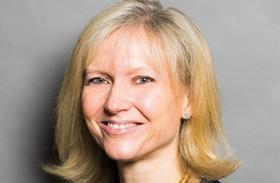We are now past the halfway point of the two-year disclosure pilot that has been running in the Business and Property Courts since 1 January 2019. It has been difficult to get a feel for how it is really working on the ground but a document published last week does give some insight.

Minutes of a November meeting of the Commercial Court Users Group, made public last week, include an update on the pilot’s ‘broadly positive’ progress by solicitor Ed Crosse and Mr Justice Knowles. But while the pilot is driving a ‘greater focus’ on narrowing the scope of disclosure in larger cases, Crosse reports concerns that it may be raising costs for lower-value claims. He adds that there is still much ‘game-playing’ in relation to disclosure, with parties taking ‘tactical positions’ over the Disclosure Review Document, for instance.
What attitude are judges taking towards enforcing the pilot rules? We can get a sense of that from the handful of reported judgments concerning the pilot. The most recent was Maher v Maher & Anor [2019] EWHC 3613, handed down last November, in which HHJ Hodge cited the pilot rules in refusing a fairly late application for disclosure of personal bank statements. The judge accepted that the bank statements might hold useful information; and should perhaps have aready been provided under the existing order. But he was unimpressed with the party’s four-month delay in applying for disclosure. Highlighting the pilot’s ‘emphasis upon culture change and reasonableness and proportionality’, Hodge rejected the disclosure application. Somewhat stingingly, he added: ‘I acknowledge the importance of the case to the parties, but that does not require every stone to be turned over, still less for a whole pile of more stones to be imported from a neighbouring quarry.’
A key cog in the machinery of the disclosure pilot is the Disclosure Guidance Hearing (DGH). This short session, which can last up to half an hour, gives parties who have tried – yet failed – to agree on disclosure, the chance to discuss the issues and get a steer from the bench at an early stage in proceedings. It had been rumoured that the takeup of these hearings had been disappointingly low, and this was confirmed in the minutes of the users group meeting published last week.
This approach seems to me to be both undesirable and contrary to the spirit of the disclosure pilot, which requires the parties to cooperate so as to promote the reliable, efficient and cost-effective conduct of disclosure
Joanna Smith QC
Judicial frustration at lawyer reluctance to make use of the DGH tool was laid bare last June in Vannin Capital PCC v RBoS Shareholders Action Group Ltd and others [2019] EWHC 1617 (Ch). Joanna Smith QC, sitting as a deputy High Court Judge, gave the parties a firm ticking off for having failed to opt for a DGH. She lamented that there had been ‘no attempt by either party’ to engage in such a hearing, even though the application in question – concerning the scope of extended disclosure – was precisely the kind of issue that a DGH is designed to resolve. She fumed that both sides had filed ‘lengthy skeleton arguments’ and ‘detailed’ submissions, which had taken up ‘more than half a day of court time’. She added scathingly: ‘This approach seems to me to be both undesirable and contrary to the spirit of the disclosure pilot, which requires the parties to cooperate so as to promote the reliable, efficient and cost-effective conduct of disclosure… Had such guidance been sought and obtained, some of the issues arising on this hearing might well have fallen away, saving time and costs.’
What else can we glean about how judges are approaching the pilot? Ventra Investments Ltd v Bank of Scotland plc [2019] EWHC 2058 (Comm), handed down last July, yielded further insight. Richard Salter QC, sitting as a deputy judge, was asked to rule on various disclosure applications according to the pilot rules.
He took a fairly strict approach, ordering disclosure of some documents, but rejecting most. At the forefront of his mind was the risk of the trial date being lost if disclosure was granted. He noted: ‘The practical reality is that any order for disclosure that I may make must necessarily take into account in one way or another the presently fixed date for trial. The effect of any order will either be to require that date to be vacated, or to add to the parties’ already extensive burden of preparatory work in the limited period left before that date. Against that background, there are… no circumstances in which it would be reasonable and proportionate for me now to make an order for disclosure… unless that order was one that was necessary for the just disposal of the proceedings.’

So a year into the pilot and we are beginning to build a sense of how it is working. But many questions are yet to be answered properly. Are lawyers really moving out of their comfort zones, towards the narrowest disclosure possible? In a case management context, are judges rolling up their sleeves to take an active role in managing the process? And the million-dollar question for clients: is the pilot actually reducing the cost of litigation? All this will need to be carefully analysed, and appropriate changes made, before this two-year pilot becomes a permanent regime change – as it is widely expected to be.
Rachel Rothwell is editor of Gazette sister magazine Litigation Funding, the essential guide to finance and costs. For subscription details, tel: 020 8049 3890



























2 Readers' comments